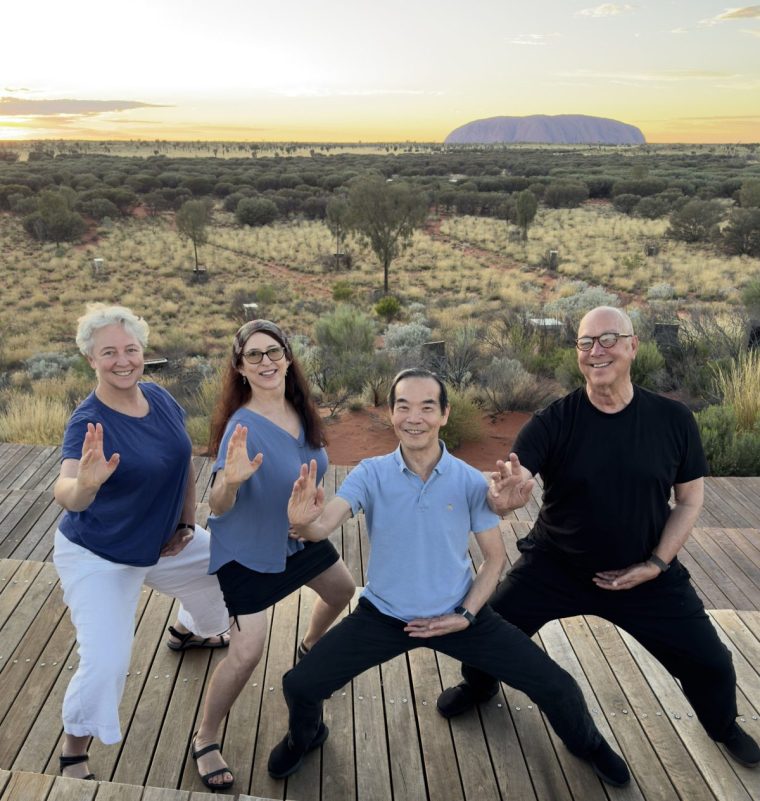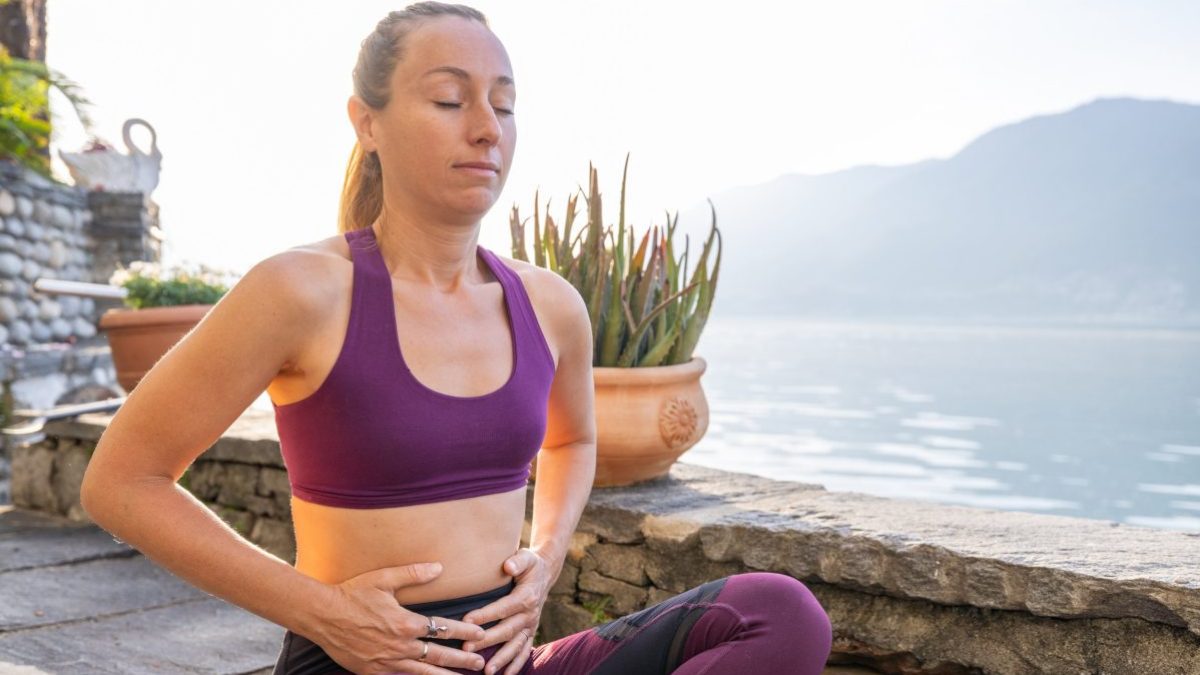If you struggle to catch even 40 winks, these tried and tested activities could provide the answer
Struggling to get a good night’s sleep is a challenge for millions of people, often leaving them feeling exhausted, frustrated and overwhelmed. According to the NHS, about one in three people has trouble getting to sleep and then staying that way, making it a serious health issue that has far-reaching consequences. Whether caused by health ailments, stress, anxiety or lifestyle factors, poor sleep can take a serious toll on body and mind.
Research published in the journal BMJ Evidence-Based Medicine suggests that yoga, tai chi, walking and jogging may be the best forms of exercise to help tackle insomnia.
Its analysis of peer-reviewed data concludes that the high accessibility, low cost and minimal side effects of these four activities makes them “well-suited for integration into primary care and community health programmes”.
We asked experts how each one of the four might help improve sleep – and their tips for beginners.
Tai chi
Dr Paul Lam is a family GP and has been teaching tai chi for more than 40 years. In 2010, he founded the Tai Chi for Health Institute, a non-profit group that empowers people to improve their health.
Tai chi looks like a series of gentle flowing movements. Like water in a river, beneath the tranquil surface there is immense hydra power for healing and inner strength.
More than 1,000 medical studies have shown that tai chi improves almost all aspects of health, including better balance, strength and immunity, stress relief and a reduction in high blood pressure.
Insomnia is usually associated with anxiety and stress. Studies by the US National Institutes of Health show that tai chi is linked to a significant reduction in anxiety, and improved relaxation leads to better sleep. A meta-analysis of 40 studies involving 3,817 participants found that regular tai chi practice significantly increased their psychological wellbeing, and also reduced their levels of stress, anxiety and depression.
 Dr Paul Lam has been teaching Tai Chi for 40 years (Photo: Provided)
Dr Paul Lam has been teaching Tai Chi for 40 years (Photo: Provided)
The best way to learn tai chi is in person, although online lessons can be more accessible. To get a flavour of it, try my free five-minute video Tai Chi to Relieve Stress and Improve Immunity on YouTube. It will give you some idea of what tai chi for health is and what a good instructor should be like.
The tai chi way of breathing helps to relieve stress and insomnia. Establish a quiet environment and lie or sit comfortably. Place one hand on your chest and another just above the belly button and imagine a small balloon beneath your palm.
Take quiet, gentle breaths in and visualise that you are filling up the balloon with air, then gently push out your lower hand. Try not to move the upper hand.
Then breathe out gently and contract your pelvic floor muscle as though you are gently squeezing air out of the balloon. Do these exercises slowly and gently. Any time you feel uncomfortable, simply let go and allow your body to breathe normally.
Try to let your body and muscles relax. This is the diaphragmatic breathing that activates the parasympathetic nervous system, which is in charge of the body’s healing and relaxing mechanisms.
Walking
Dr William Bird is a GP, the chief executive of Intelligent Health and the chairman of Active Essex. He has been passionate about getting more people active since the mid-1990s.
Our bodies are designed to be active. Being inactive makes us both age quicker and more vulnerable to disease. As a GP, I have spent my life advocating the benefits of walking and being outdoors, which boosts mood, health and happiness.
Even very small amounts of regular exercise can help to keep degenerative diseases, such as Parkinson’s and dementia, and inflammatory diseases, such as arthritis, at bay.
Physical activity improves mental health by reducing chronic inflammation and increasing the production of brain-derived neurotrophic factor (BDNF), a hormone which repairs brain synapses, helping to prevent depression and anxiety.
 Dr William Bird iis passionate about getting fit
Dr William Bird iis passionate about getting fit
A 2021 study by the University of Massachusetts showed that walking boosts the chances of a good night’s sleep. It reduces blood flow to the part of our brain that creates fear and anxiety – so a walk, ideally in nature, in the late afternoon or early evening, clears your head ahead of sleep.
A study reported by the journal Climacteric in 2015 proved that sleep quality and length both improved in post-menopausal women who walked regularly, as well as a reduction in the need for sleeping tablets.
Walking doesn’t have to begin with long hikes or treks around towns. Just small additions to raise your heart rate can unleash the benefits. Start simple: begin with a 10-minute walk round the block. Pop down to the shops to post a letter or grab some lunch, instead of driving. Park your car three-quarters of the way, then walk the final part of the route. Little changes will soon help you to walk further and faster and boost your physical and mental health.
Jogging
Ella Mintram is a Florida-based coach and personal trainer whose mission is to offer fitness sessions for people of sizes, shapes and backgrounds.
In the world of jogging, there is a massive focus on how fast you are, how many personal bests you’ve hit, or how far you have run. I have definitely found myself getting caught up in comparisons and feeling like I wasn’t “good enough” to belong in the running world.
 Ella Mintram says jogging has a feel-good effect (Photo: Provided)
Ella Mintram says jogging has a feel-good effect (Photo: Provided)
Over the past few years, I have started slowing down and focusing more on how jogging makes me feel, rather than constantly chasing faster times, and it has made me enjoy it so much more.
There is real research behind that feel-good effect. Jogging triggers the release of endorphins and serotonin. These “happy hormones” help to reduce symptoms of anxiety and depression. Personally, even getting out for a short jog just a couple of times a week makes a massive difference to my headspace.
Another often overlooked benefit of jogging is simply being outside. Getting some fresh air and taking a break from being indoors can do wonders for your mood. It gives me a huge boost in motivation and productivity for the rest of the day.
Unlike intense workouts that can leave you feeling a little too awake and overstimulated (especially in the evenings), jogging is gentle enough to help your body wind down. It lowers stress levels, calms the mind and supports a better sleep routine, which is something I definitely struggle with sometimes.
And going for a jog – especially on tough days – builds more than just fitness. It improves resilience and discipline and reinforces the idea that you are someone who shows up for yourself, even when it’s hard. For me, jogging without pressure has been so much easier to stick to than “serious” running ever was.
You don’t need any fancy gear or special ability – literally anyone can do it. All it takes is putting one foot in front of the other and moving your body. It doesn’t matter how fast you are or how far you can go.
Yoga
Paul Fox is a founder member and chief executive of the Yoga in Healthcare Alliance, a charity dedicated to integrating the benefits of evidence-based yoga into healthcare. He is also an ex-chairman of the British Wheel of Yoga, the UK’s largest yoga membership and teacher training organisation.
Those of us who have been practising yoga for 30 years have always known its many health and wellbeing benefits. Now we have an evidence base of more than 800 published studies and 50 meta-analyses showing that yoga works simultaneously on the body, mind and our ability to sustain meaningful social connection.
From a physical perspective, yoga maintains range of movement in joints and keeps muscles strong and long. It helps us to achieve autonomic balance so that we are not in a state of chronic underlying stress, which raises risks for a range of lifestyle-related diseases.
The nervous system is regulated and there are improvements in the body’s chemical balance (fewer stress hormones and inflammatory markers). And breath-led practice with soft-focused attention calms the mind and promotes mindfulness. When we declutter our minds, we are nicer people to be around and we therefore have higher-quality interactions.
 Paul Fox says yoga is good for health and well-being
Paul Fox says yoga is good for health and well-being
It is this mindfulness quality which makes yoga such an effective component of sleep hygiene. Gentle, breath-led movement and/or a calming breathwork practice can settle the mind and prepare you for a good night’s rest.
If you haven’t done yoga before, it’s important to understand that the central purpose of it is to settle the mind. Classical yoga, dating back more than 2,000 years, is based on the “sutras” – or aphorisms – of the ancient Indian sage Patanjali, who set out how to steady the mind and prepare it for meditation. The postures used in yoga – or asanas – came much later.
The Yoga in Healthcare Alliance delivers evidence-based protocols to NHS patients and staff based on gentle, breath-led movement, mindfulness, relaxation and an appropriate physical challenge (we offer chair- and mat-based practice in the same class so that everyone can work at their own pace).
We receive a lot of emails from stressed NHS staff reporting that their sleep has improved greatly and that the night after their yoga session is their best rest that week.
If you want to try yoga to support better sleep, I recommend sitting in a supported position with the spine upright but not rigid. Place your hands on your belly, relax your stomach and close your eyes.
Allow the abdomen to swell slightly as you breathe in and recede slightly as you breathe out. Keep the rib cage and upper chest passive.
If you can, breathe in and out through the nose and slow down the breath, breathing in for four, five or six seconds, and breathing out for four, five or six seconds. Soft, silent breathing with no strain.
Allow your mind to focus completely on the experience and sensations of breathing. Even after three minutes, you will notice a difference. Five to 10 minutes would make an even bigger impact.
